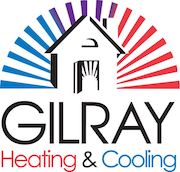
You shouldn’t be forced to give up comfort or drain your wallet to keep your home at the right setting during summer weather.
But what is the best temperature, exactly? We discuss ideas from energy experts so you can choose the best temp for your home.
Here’s what we advise for the most energy-efficient setting for air conditioning in Wausau.
Recommended Thermostat Settings for Summer
Most families find setting the thermostat at 72-73 degrees provides ideal comfort. However, if there’s a big difference between your inside and exterior temps, your electrical expenses will be greater.
These are our recommendations based on the U.S. Department of Energy (DOE) and ENERGY STAR®.
While at home: 78 degrees. While that sounds hot, there are ways you can keep your residence cool without having the AC going all the time.
Keeping windows and window treatments closed during the day keeps cold air where it belongs—within your home. Some window solutions, like honeycomb shades or plantation shutters, are designed to deliver more insulation and enhanced energy savings.
If you have ceiling fans in your residence, the DOE says you can raise thermostat settings about 4 degrees hotter without giving up comfort. That’s due to the fact they cool with a windchill effect. Since they cool people, not areas, shut them off when you exit a room.
If 78 degrees still seems too warm initially, try running a test for about a week. Start by increasing your thermostat to 78 degrees while you’re at your residence. Then, steadily lower it while using the tips above. You might be amazed at how comfortable you feel at a warmer temperature setting.
While away: 88 degrees. There’s no rationale for keeping the air conditioner working all day while your home is vacant. Moving the temperature 7–10 degrees warmer can save you as much as 5–15% on your air conditioning costs, according to the DOE.
When you arrive home, don’t be tempted to set your thermostat under 78 to cool your home more quickly. This isn’t useful and often produces a higher cooling bill.
A programmable thermostat is a good approach to keep your settings under control, but you need to set programs. If you don’t set programs, you might forget to increase the set temperature when you leave.
If you need a convenient remedy, think over installing a smart thermostat. This thermostat links with your phone, so it realizes when you’re at your residence and when you’re gone. Then it instinctively changes temperature settings for the biggest savings. How much exactly? Usually $180 yearly on heating and cooling, according to ENERGY STAR.
Another benefit of getting a smart thermostat? You can use your phone to watch and adjust temperature settings from just about anywhere.
While sleeping: Around 70 degrees. While ENERGY STAR recommends 82 degrees, that might be unbearable for most families. Most people sleep better when their bedroom is chilled, so that’s why the National Sleep Foundation suggests 60–67 degrees. But that could be too cool, based on your clothing and blanket preference.
We recommend trying a comparable test over a week, moving your temp higher and slowly turning it down to locate the best temp for your residence. On cool nights, you may learn keeping windows open at night and using a ceiling fan is a preferable solution than operating the air conditioner.
More Methods to Use Less Energy During Warm Weather
There are added methods you can conserve money on AC bills throughout warm weather.
- Buy an energy-efficient cooling system. Central air conditioners only are effective for about 12–15 years and lose efficiency as they become older. A new air conditioner can keep your home comfier while keeping energy bills down.
- Schedule annual air conditioner tune-ups. Annual air conditioner maintenance keeps your unit running properly and could help it operate at better efficiency. It could also help extend its life cycle, since it enables technicians to uncover small troubles before they cause a major meltdown.
- Switch air filters frequently. Read manufacturer instructions for replacing your air filter. A dusty filter can lead to your system short cycling, or switch on and off too much, and raise your utility.
- Inspect attic insulation levels. Almost 90% of houses in the U.S. don’t have adequate insulation, according to the Insulation Institute. The majority of southern climates need 13–14” of attic insulation, while northern climates should have 16–18”.
- Have your ductwork examined. Ductwork that has come apart over time can leak cold air into your attic, walls or crawl space. This can create big comfort issues in your home, like hot and cold spots.
- Seal holes, doors and windows. Keep humid air in its place by closing openings. You can also caulk or weather strip doors to trap more cool air within your home.
Conserve More Energy During Hot Weather with Gilray Heating and Cooling
If you are looking to use less energy during hot weather, our Gilray Heating and Cooling experts can help. Get in touch with us at 715-515-7221 or contact us online for additional information about our energy-saving cooling solutions.
